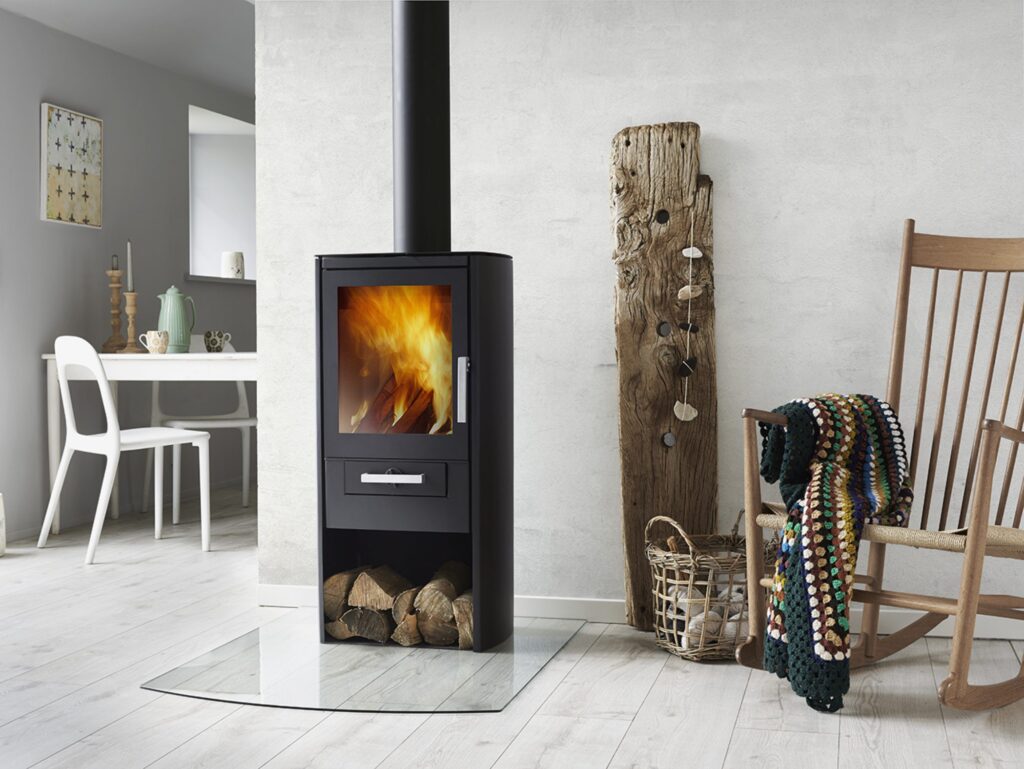From drones to bricklaying robots, the possibilities to robotics and automation in construction are multitudinous, Showhome Editor Joseph Clarke reveals
In the May issue of Showhome Magazine we interviewed Xavier Juarez, Construction Services Director for HP, who spoke about their latest innovation for housebuilding, HP Siteprint – a robotic 3D printer that makes the on-site printing of building layouts easier, faster, and more efficient, thanks to the autonomy and accuracy of the robotic solution. Seeing the robot in action at UK Construction Week fully confirmed these traits and left me wondering about the other possibilities that automation and robotics can offer to housing developers and construction-site workers.
Automation is not only being employed in printing. In fact, multiple automotive and robotic solutions have already been designed and successfully introduced into the housebuilding market, receiving a hugely warm welcome from developers, as they facilitate both the offsite and onsite tasks of a house build.
As Xavier Juarez rightly pointed out, “Construction is at a tipping point in terms of the adoption of technology. We see it not just with robotics, but also in other fields like software. We are starting to see a significant increase in the use, but also in the investment that is being given by different companies and by venture capital.” As technology advances, traditional construction methods are being combined with technological solutions such as 3D printing, self-driving vehicles, computer-controlled manufacturing robots, and even drones.
Construction robotics
Unlike humans, robots and automated machinery are not subject to human issues like fatigue, burnout, or disinterest in repetitive tasks. Therefore, robots excel in handling such tasks, which humans may find monotonous or prone to errors due to exhaustion and distractions. While robots require regular maintenance to sustain consistent quality work, they offer remarkable efficiency to construction sites.
A further positive feature of robots is that they can achieve higher work output rates in less time, which leads to reduced operational costs and minimised waste at construction sites. Robots can operate for extended periods with heightened precision, surpassing human capabilities. However, humans are essential for programming, control, and operation, necessitating a skilled workforce capable of managing these emerging technologies.
We can also expect to witness less construction-related Injuries. Historically hazardous due to heavy lifting, dangerous elements, and precarious terrains, the construction industry can experience a notable reduction in injuries through the incorporation of construction robots.
Tailored programming for specific needs is also facilitated through automation. The construction industry has evolved significantly over time, yet some conventional methods endure. Robots offer a solution for innovative construction firms seeking to diversify approaches. These machines can be programmed or customised for various tasks, empowering construction companies to enhance creativity and operational efficiency.
3D printers
Models have been used by architects for centuries, with traditional model-making being a manual craft using clay, cardboard, wood or ceramic, with the earliest evidence of architectural models dating back to the Pharaohs. The problem with these methods, however, is that they are more time-consuming, and it is not uncommon to find inaccuracies or experience breakages. Fortunately, nowadays architectural studios have a greater number of resources at their disposal, including CNC milling machines, laser cutters and 3D printers, which reduce labour needs and time.
Modern 3D printers have revolutionised the way that models are made, giving architects and housing developers the opportunity to print a scaled-down replica of their end product – a “show” home. According to Formlabs, “3D printing can be used to produce architectural models of entire buildings, but also in combination with other tools and processes.” One example of this would be creating the base part of an architectural model by using CNC machining or laser cutting, and then using a 3D printer to develop more complex components, such as stairs or curved surfaces. Formlabs also recognises that the “Combination of 3D printing alongside traditional manufacturing solutions speeds up the creative process and increases the accuracy levels of architectural models.”
But 3D printers are not only limited to the design stage. In fact, houses have already been entirely built through 3D printing in countries like the USA and France, with the UK expected to follow suit. One particularly successful build, a house that was completely 3D printed, was seen in the Netherlands in April of 2021.
However, the construction of a new home by using 3D printing in its entirety like this is still very uncommon. What is much more viable and therefore more frequent is the use of robots to aid construction workers. “Robot builders” are being employed more and more across construction sites to carry materials or to lay foundations. Robotic brick layers in particular are growing in popularity.
Robotic brick layers
According to The Constructor, “In 2015, Construction Robotics introduced the first modern bricklaying robot, known as SAM100 (Semi-Automated Mason), at the World of Concrete event. SAM100 increases productivity by three to five times but was not physically adopted due to social concerns such as workforce safety and quality of work.
“Within a few years of its release, an Australian company named Fastbrick Robotics released its automated bricklaying machine called Hadrian X. This robot is technologically advanced with several new characteristics.”
A robotic bricklayer can work relentlessly, without the need for a break, to lay up to 3000 bricks per day, reducing the overall project duration. As well as this, a robotic bricklayer keeps operating as long as it has enough fuel, mortar, and brick, which dramatically increases productivity and efficiency. This then means that labour costs can be cut by up to 50%. Additionally, the overall quality of wall alignment can be improved using a robotic bricklayer and this type of robot is exceptionally good at lining bricks up vertically.
Recognising the potential to this approach to housebuilding, Construction Automation, a UK-based company, introduced its robotic block and bricklayer as the first machine that could also build around corners without stopping.
Construction Automation Director, David Longbottom, told Showhome:
“Robotic brick laying machines increase productivity, improve health and safety, guarantee quality, and crucially close the skill shortage gap. On site automation is category 7 of Modern Methods of Construction as defined by Mark Farmer in his report ‘Modernise or Die’. Once you build the superstructure to a digital plan then internal components can be manufactured off site in efficient, easy to transport and store ways. This delivers a business model which adds up to delivering quality homes that have very long design lives as opposed to most modular systems with design lives of 30 years.”
Yet while robots make a steady progression across the housebuilding industry, it is worth noting that they are not completely without flaws. On the downside, robotic bricklayers are expensive and proper training is needed for operators to control them effectively. Furthermore, it has been widely noted that the onsite installation and alignment of the machine is very time-consuming. That said, as technology continues to advance, these issues are predicted to diminish quite substantially.
Robotic layout printers
As we found out in our interview with HP Siteprint, robotic printers can also facilitate the process of layout or setups on construction sites. Javier explained:
“Today this process is very important because if you make a mistake when doing the layout of set-up, this mistake propagates on the line. This means you need to do it with a lot of care and the people that do it are normally very skilled, but it takes a long time because it’s very minimal and it’s in the critical part of the project because typically you cannot start building until you have marked where things are going to go.”
This is still quite a new product category in the market, but as it offers professionals the ability to mark the floor, which typically involved chalk and being on their knees, in a faster, more accurate way, and more comfortable way, it is one that looks set to stay.
Drones
Since the development of consumer drone technology that saw the introduction of the first mass-market drone in 2013, over the last decade drones have revolutionised various industries, including construction. Providing innovative solutions that improve efficiency, safety, and accuracy, construction drones can be used for multiple purposes.
As drones are equipped with high-resolution cameras and LiDAR (Light Detection and Ranging) technology, they can quickly survey and map construction sites. This data can then be used to create detailed topographic maps, 3D models, and accurate measurements, aiding in the planning and design stages of a project. They can also capture regular aerial images and videos of construction sites, allowing project managers and stakeholders to monitor progress over time, which helps identify potential delays, assess work quality, and make informed decisions based on real-time data.
Additionally, drones can perform remote inspections of hard-to-reach or hazardous areas, such as tall structures, bridges and rooftops. These inspections reduce the need for workers to be exposed to dangerous conditions and can identify issues before they become more significant problems. Safety is also enhanced on construction sites by identifying potential safety hazards, enforcing safety protocols, and monitoring worker activities. This proactive approach can help prevent accidents and improve overall safety compliance.
Drones also come in incredibly handy when calculating the volume of materials needed, such as gravel, sand, and construction debris. This data aids in inventory management and ensures accurate billing and resource allocation. As the drones are equipped with sensors, they can collect data on various construction materials’ quality and conditions, which helps ensure that the materials meet specified standards and guidelines.
Lastly, the visual documentation that is recorded by drones can be used for several purposes, including giving project updates to clients, stakeholders, and regulatory agencies, or providing high-quality imagery and videos for presentations, reports and documentation. Aerial images and videos captured by drones can also be used for marketing purposes, showcasing the progress and final appearance of a construction project, which can help attract potential investors, clients, and buyers.
Incorporating drones into construction operations requires appropriate training, compliance with regulations, and investment in the necessary equipment and software. As technology continues to advance, drones are likely to play an increasingly integral role in the construction industry, offering numerous benefits across various stages of a project’s lifecycle.
Exoskeletons
A hugely popular solution transforming house builders into cyborgs and giving them a taste of what it would be like to possess superhuman powers are exosuits or exoskeletons. An exoskeleton is a wearable suit with motorised joints that are designed to give the average construction worker an enhanced level of strength and protection. Equipping their arms, legs and back with a reinforced external shell that prevents muscle strain, protects the body, and helps to improve posture. By wearing the suit to perform strenuous tasks like heavy lifting or overhead procedures, productivity is increased along with employer safety.
Despite appearing somewhat impractical or uncomfortable, this device has been quietly gaining in popularity in the construction industry and is predicted to gain much more traction in the years to follow. Given that there are still limitations to using fully automated solutions such as the aforementioned, having the mental abilities and physical skills of human workers, along with the extra force and protection from exosuits seems like the perfect partnership.
As is the case for most, if not all, industries today, technology has become a key player when it comes to creating innovative, highly functional and effective products that help optimise efficiency and output. In the case of housebuilding, and the development of new builds, robotics and automation definitely have a place. Not only can robots be employed during the planning and design stage of a new build, but also as onsite builders or ground workers, and while fully automated solutions might not yet be ideal, for the time being, aiding construction workers with printers, drones, robotic brick layers or exoskeletons, seems like a very bright idea. And perhaps it won’t be too long before we hear more and more homeowners uttering the phrase, “Our house was built by robots!”
Read more news and exclusive features in our latest issue here.
Never miss a story… Follow us on:
Showhome
@Your_Show_Home
@Showhomemag
Media Contact
Joseph Clarke
Editor, Showhome
Tel: +44 (0) 1622 823 920
Email: [email protected]











